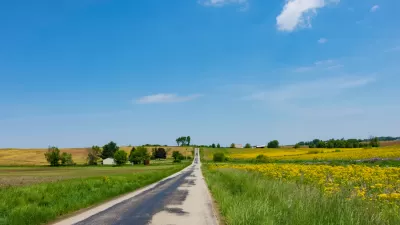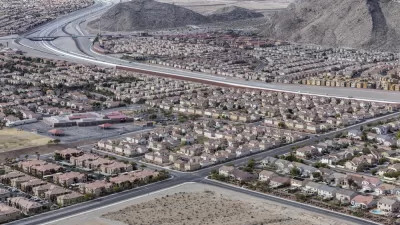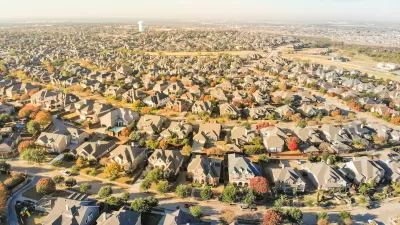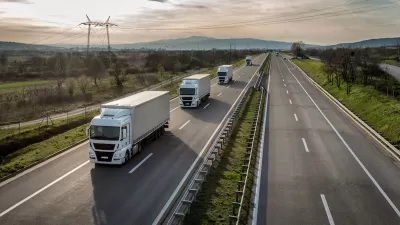A new Intel facility is set to bring thousands of workers to rural Ohio. Will the state embrace mass transit or give in to auto-centric sprawl?

In an opinion piece in Columbus Alive, Brian Williams argues that “Publicly funded transit must have a place alongside publicly funded auto travel in the massive Intel development” currently underway in Ohio. “With Intel bringing thousands of employees to the vanishing farmland halfway between Columbus and Newark, we can routinely dump hundreds of millions of dollars into ever-widening I-270 and Rt. 161. Or we could connect with the 21st century and build an easier-to-maintain and higher-capacity rail line.”
According to Williams, “It’s not just a matter of getting people from Columbus to Intel. It’s about understanding and shaping the region’s needs over the next several decades.” For Williams, “The advantage of rail is that walkable communities could develop at stations along the way and avoid the spread-out development and parking lots that would gobble up the rest of the rich farmland in western Licking County.”
The piece argues that “If the site is developed in a way intended to accommodate cars, it will be chock-full of cars no matter how much transit exists. Instead, the area should be laid out in a way that accommodates transit and pedestrians.” Williams admits this will be hard to achieve given the region’s existing sprawl, but continuing to fund car-centric development will only perpetuate an unsustainable model.
FULL STORY: Will Intel spur mass transit or inspire more car-driven sprawl?

Planetizen Federal Action Tracker
A weekly monitor of how Trump’s orders and actions are impacting planners and planning in America.

Chicago’s Ghost Rails
Just beneath the surface of the modern city lie the remnants of its expansive early 20th-century streetcar system.

San Antonio and Austin are Fusing Into one Massive Megaregion
The region spanning the two central Texas cities is growing fast, posing challenges for local infrastructure and water supplies.

Since Zion's Shuttles Went Electric “The Smog is Gone”
Visitors to Zion National Park can enjoy the canyon via the nation’s first fully electric park shuttle system.

Trump Distributing DOT Safety Funds at 1/10 Rate of Biden
Funds for Safe Streets and other transportation safety and equity programs are being held up by administrative reviews and conflicts with the Trump administration’s priorities.

German Cities Subsidize Taxis for Women Amid Wave of Violence
Free or low-cost taxi rides can help women navigate cities more safely, but critics say the programs don't address the root causes of violence against women.
Urban Design for Planners 1: Software Tools
This six-course series explores essential urban design concepts using open source software and equips planners with the tools they need to participate fully in the urban design process.
Planning for Universal Design
Learn the tools for implementing Universal Design in planning regulations.
planning NEXT
Appalachian Highlands Housing Partners
Mpact (founded as Rail~Volution)
City of Camden Redevelopment Agency
City of Astoria
City of Portland
City of Laramie





























